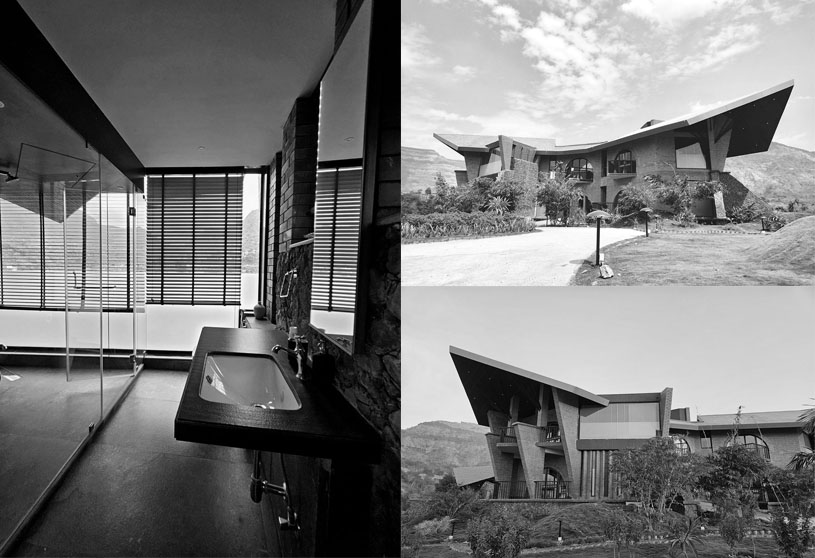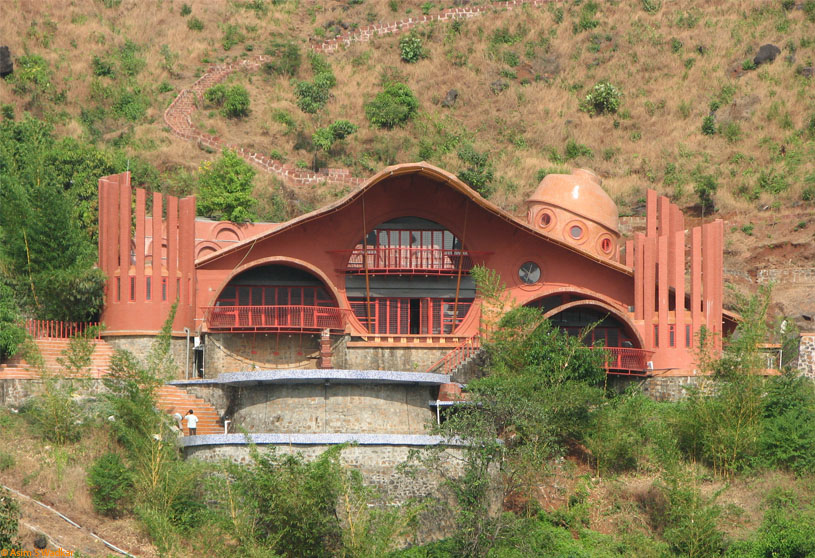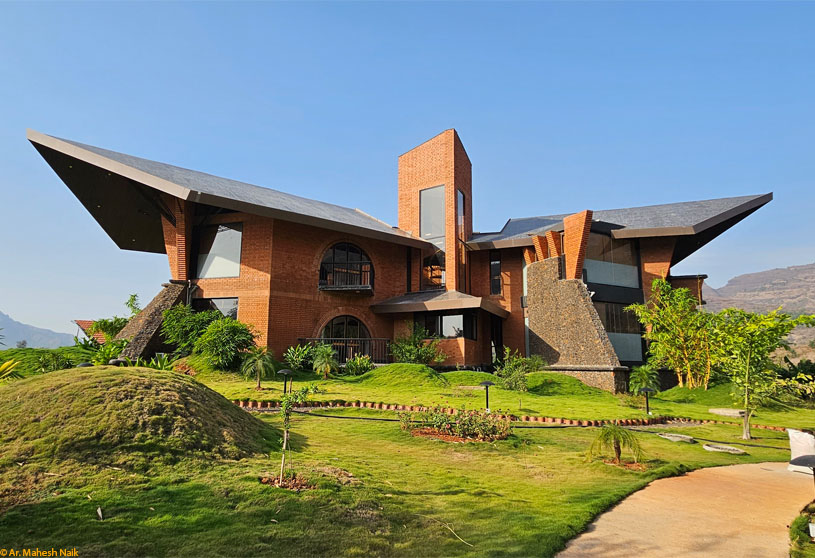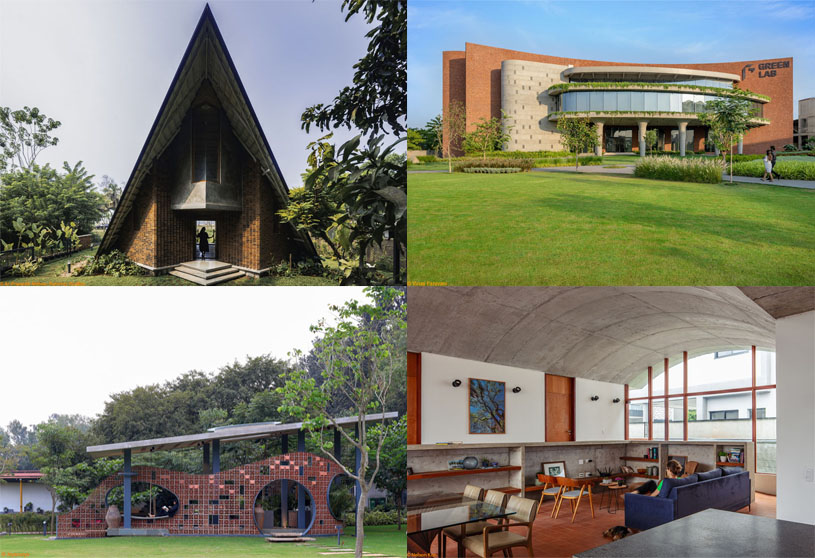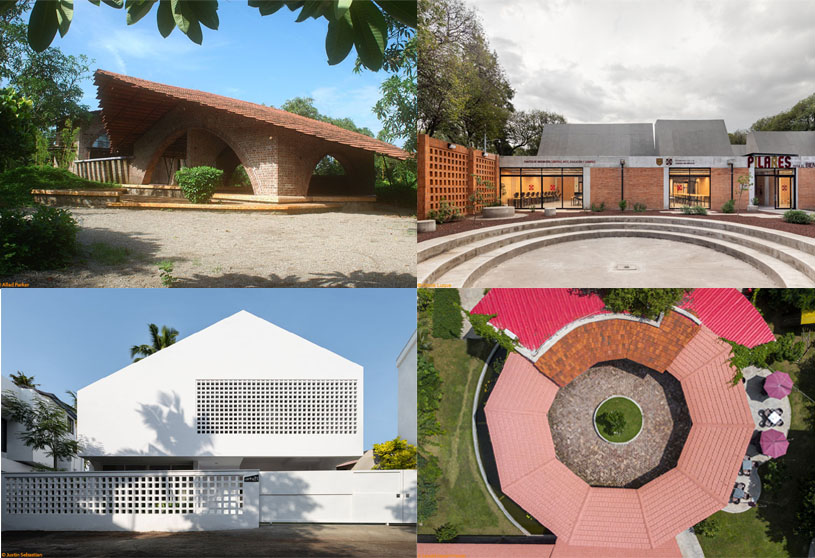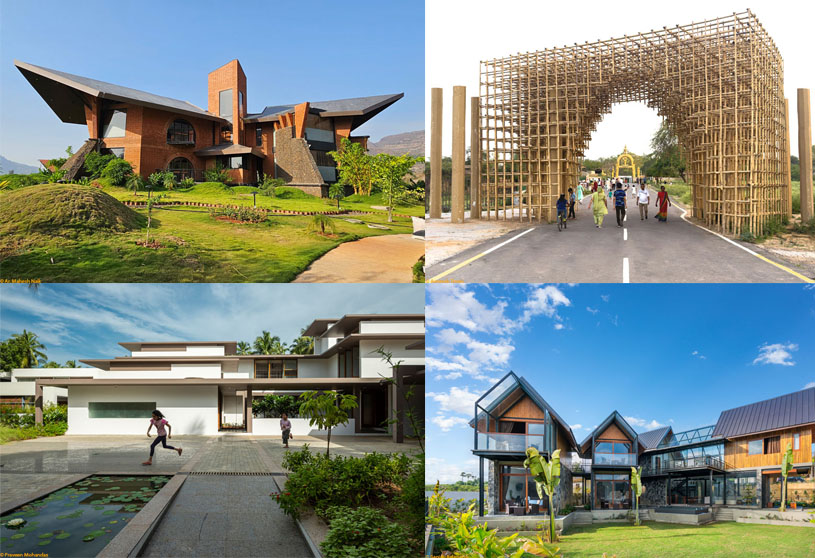(“Text as submitted by architect”)
 Mahesh Naik
Mahesh Naik
He pursued a B.Arch. (2001) and a M.Arch. (2019) from Pillai’s College of Architecture, New Panvel. He worked under Ar. Dean D’cruz and Ar. Hafeez Contractor and then started his own practise in 2002 in Navi Mumbai. His first project, Ebrahim Family House, was nominated for the Aga Khan Award 10th cycle in 2007 and featured in the 21st century world architecture atlas by Phaidon Press, London. His other project, Moonlight Farmhouse, Ratnagiri, Maharashtra, is included in the online world architecture atlas by Phaidon Press, London. He was a TED Talk speaker at IIM Ranchi in 2012.
He has 18 years of teaching experience in college. His works have been featured in 13 various architectural magazines, including Surface Asia Magazine (July–Sept 2012), Young Designer 2006 IAB, etc.
As a speaker, he has given lectures on his work, “Objective Organic Architecture,” in 14 architecture colleges till now.
He also has 18 years of field experience. His practice is based on Organic Architecture, creating structures that grow from nature and blend with it to achieve human-centric design goals. He believes that Objective Organic Architecture focuses on the creation of objective art forms.
Practice Ideology
Philosophy of Objective Organic Architecture:
Organic architecture is more intrinsic by nature. It is based on an idea derived from a holistic approach. It echoes the philosophy of evolving in response to context and interaction with surroundings. In organic architecture, “NATURE” becomes the prime attribute. The nature of a site—the nature of topography, the nature of climate, the nature of material used, the nature of intention, and the nature of man—all inspire its built form. Organic architecture is a form of objective art.
Its soul purpose is “the Objective development of a man”. It has character like a man and has its own unique form to serve its particular purpose. The extrovert nature of man is synchronised with extrovert space; similarly, the introverted nature of man is synchronised with introvert space. Thus forming a resonance between the man and the space. Arriving at this “state of resonance” is very important in Objective Organic architecture. Such art forms act like a code language to produce a particular feeling in men. For instance, if someone sees a beautiful form or a beautiful building, they feel joy because of its geometry, which is also induced in them. In a similar way, the presence of an ugly building makes one feel uncomfortable, repulsive, and disharmony because of its disproportionate, non-balanced, disordered, and crooked geometry, which gets induced in their mind. So whatever man sees, in some deep sense he becomes like that. Just by sitting silently and looking at the statue of Buddha, something in oneself will become silent and still. Something in you will become Buddhalike. Watching the Taj Mahal under the full moon might make one fall into a very meditative space. Thus, Objective Organic architecture helps a person become centred, healthy, and whole.
To summarise Objective Organic Architecture : “In flute, air gets transformed into melody. In Man, words get transformed into a song. Similarly, Art form should have the quality to transform man to a higher plane of being.” Thus, the flute, the man, and the art form are instruments for spiritual transformation. – aMn Objective Organic Architecture focuses on the creation of such art forms.
Way of working:
The architect does not create any working drawings following the creation of a conceptual drawing and model. Without the assistance of any structural or civil engineers, the project develops organically as a result of on-site work done in response to the local environment. The architect works directly with the local mason and fabricator on the project. He believes that structures made from working drawings lack spontaneity and are static and inert. Final as-built drawings are created for documentation once the project is finished.
